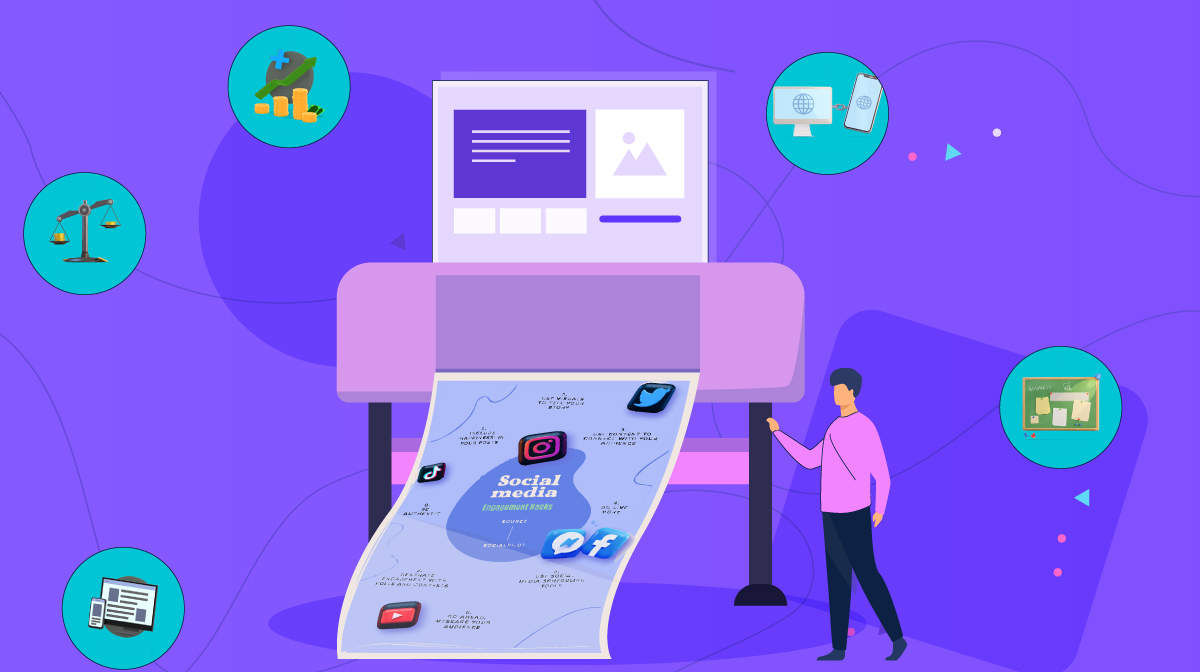
Are you tired of creating new content for your social media channels every day?
Repurposing your existing content can be a game-changer! In this article, we’ll explore the benefits of repurposing content, the best practices to follow, and tips you can use to simplify the process.
Social media is a powerful tool for businesses and individuals alike. It allows you to reach your target audience, build your brand, and engage with your followers. However, creating fresh and engaging content for your social media channels can be time-consuming and challenging. Repurposing content can be a smart strategy to save time and maximize your reach. In this article, we’ll show you how.
Benefits of Repurposing Content
Repurposing content is not only a time-saver but also has numerous benefits:
1. Reach New Audiences
Repurposing your content for different platforms can help you reach new audiences who might have missed your original content. For example, if you have an informative blog post, you can turn it into a visually appealing infographic and share it on Pinterest or Instagram.
2. Save Time and Money
Creating new content for your social media channels can be time-consuming and expensive. Repurposing content saves you time and money, allowing you to focus on other aspects of your business.
3. Improve SEO
Repurposing content can also improve your search engine optimization (SEO). When you post the same content on multiple platforms, you increase the chances of backlinks, which can improve your website’s authority and ranking. Moreover, you can target a set of relevant keywords from multiple angles, by utilizing different platforms and mediums.
4. Increase Engagement
Repurposing your content in different formats can also increase engagement. For example, if you have a long-form blog post, you can create a series of shorter videos, social media posts, or email newsletters to keep your audience engaged.
5. Magnify Visibility
Repurposing content also opens up various channels of visibility, allowing you to leverage different user bases of popular channels. For example, a podcast can help boost your YouTube results, while clips from the same can easily hit desired numbers on Instagram reels.
Examples of Content Repurposing
Repurposing content on social media is a straightforward process that can help you maximize your reach and engagement. Here are some effective ways to repurpose your content:
Repurpose Blog Posts into Social Media Posts
Blog posts are an excellent source of content for repurposing. You can turn long-form blog posts into a series of shorter social media posts or create graphics that highlight key points from the blog post. You can also create quote graphics using memorable quotes from the blog post to share on social media.
Turn Videos into Short Clips for Social Media
Videos are another great source of content for repurposing. You can create short clips from longer videos and share them on social media platforms like Instagram, Facebook, and Twitter. You can also create GIFs from your videos and share them on social media platforms.
Create Infographics from Existing Data
Infographics are a highly shareable type of visual content that can help you reach a wider audience on social media. To create an infographic, you can take data from a blog post or other sources and turn it into a visually appealing graphic. Infographics are great for presenting complex information in an easy-to-understand format and can be shared on social media platforms like Pinterest, Instagram, and Facebook.
Transform Text-based Posts into Visual Posts
Visual content tends to perform better on social media than text-based content. However, that doesn’t mean you have to stop creating text-based posts altogether. Instead, consider transforming your text-based posts into visual posts by adding images, videos, or graphics. This can help make your posts more engaging and shareable on social media.
Use User-Generated Content
User-generated content (UGC) is any type of content created by users, such as photos, videos, or reviews. UGC can be an excellent source of content for repurposing on social media. By sharing UGC, you can show your audience that you value their input and create a sense of community around your brand. UGC is also highly shareable, so it can help you reach a wider audience on social media.
Tips for Effective Content Repurposing
Now that you have a decent understanding of the importance of restyling your content pieces, let’s go through some of the best practices that will help you get the most out of your repurposing strategy:
1. Identify Your Best Performing Content
Start by identifying your best-performing content. Analyze your website and social media analytics to determine which pieces of content have the most views, shares, and engagement. This will give you a clear idea of what type of content to repurpose.
2. Tailor Your Content for Each Platform
Each social media platform has its own audience, best practices, unique strengths and limitations. Hence, you should customize your content to fit each one. For example, Instagram is great for visual content like photos and videos, while Twitter is better for short, snappy text updates. By adapting your content to each platform, you’ll be able to maximize its impact and reach.
3. Repurpose Content in Different Formats
Repurposing content in different formats can appeal to different types of audiences. For example, you can turn a blog post into a video or an infographic. This not only keeps your content fresh but also allows you to reach a wider audience.
4. Create a Social Media Calendar
Creating a social media calendar is a great way to stay organized and ensure that you’re consistently posting new content. When creating your social media calendar, be sure to include repurposed content in your plan. This can help you maximize the reach of your existing content and ensure that you’re providing value to your audience on a regular basis. Additionally, planning ahead can help you identify gaps in your content and ensure that you’re covering all of the topics relevant to your brand.
Scheduling tools such as Hootsuite, Buffer, and Sprout Social can simplify the process of repurposing content. You can schedule your repurposed content in advance and post it automatically to multiple social media channels.
5. Stay Consistent with your Branding
Staying consistent with your branding is another key tip. Your brand should have a recognizable look, feel, and tone across all of your social media channels. By maintaining consistency, you’ll help build trust with your audience and establish a clear identity that sets you apart from your competitors.
6. Fine-Tune Your Approach
Finally, it’s important to monitor your results and adjust your strategy accordingly. This includes tracking metrics like engagement rates, reach, and follower growth to see what’s working and what’s not. Based on your findings, you can make informed decisions about how to tweak your content strategy to achieve better results over time.
Conclusion
In conclusion, repurposing content on social media is a valuable and effective strategy for any business or individual looking to maximize their online presence. By adapting and reusing existing content in new and creative ways, you can reach a wider audience, reinforce your brand message, and save time and resources in the process. However, it’s important to approach content repurposing with a well-thought-out plan and a clear understanding of your audience and their preferences.
With the tips and techniques outlined in this article, you can start repurposing your own content today and enjoy the many benefits it has to offer. Don’t let your old content go to waste – give it a new lease on life and watch your social media engagement soar!
For more insights from the world of social media marketing, consider:
SMM Blogs | Shivyaanchi


